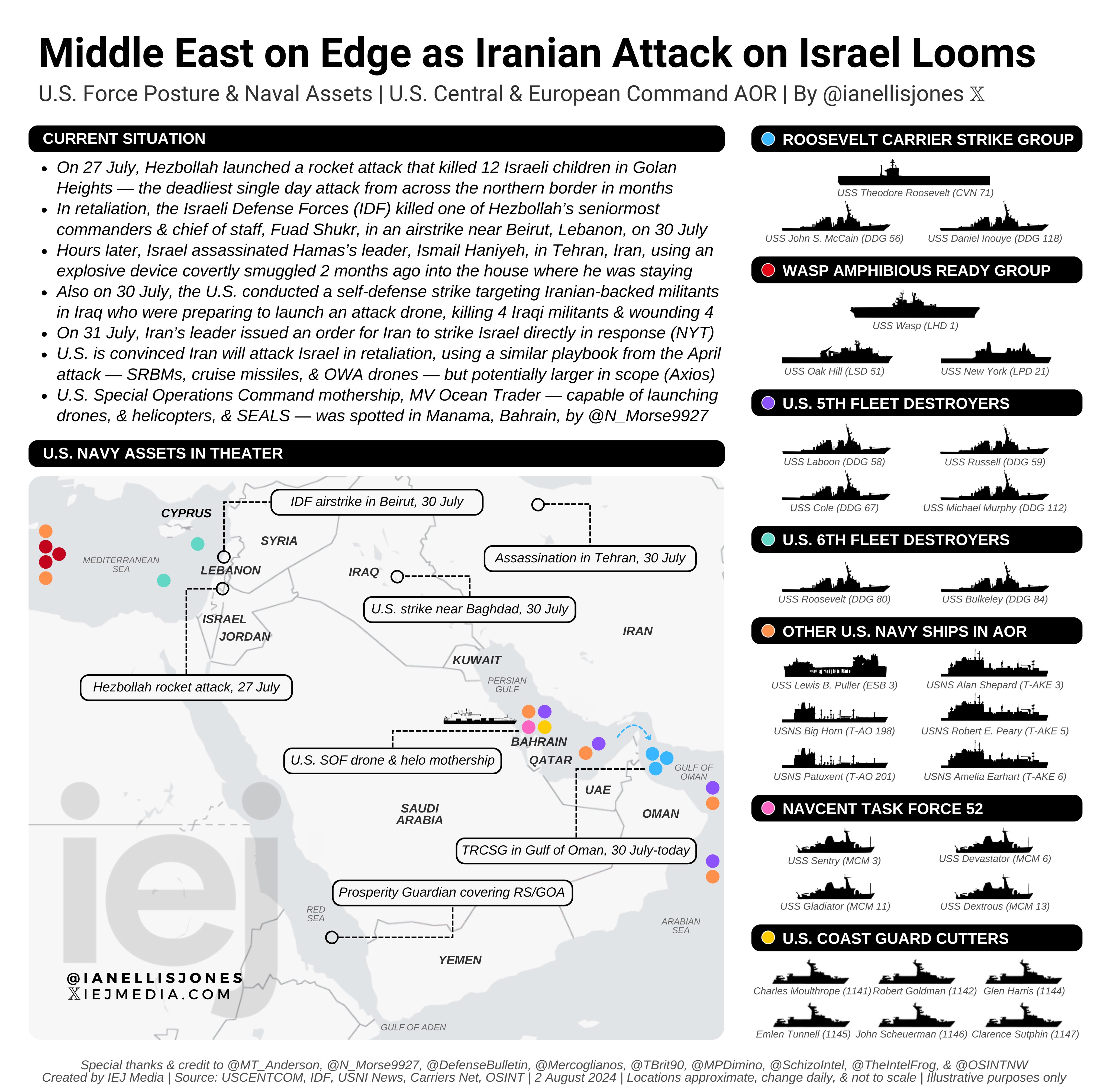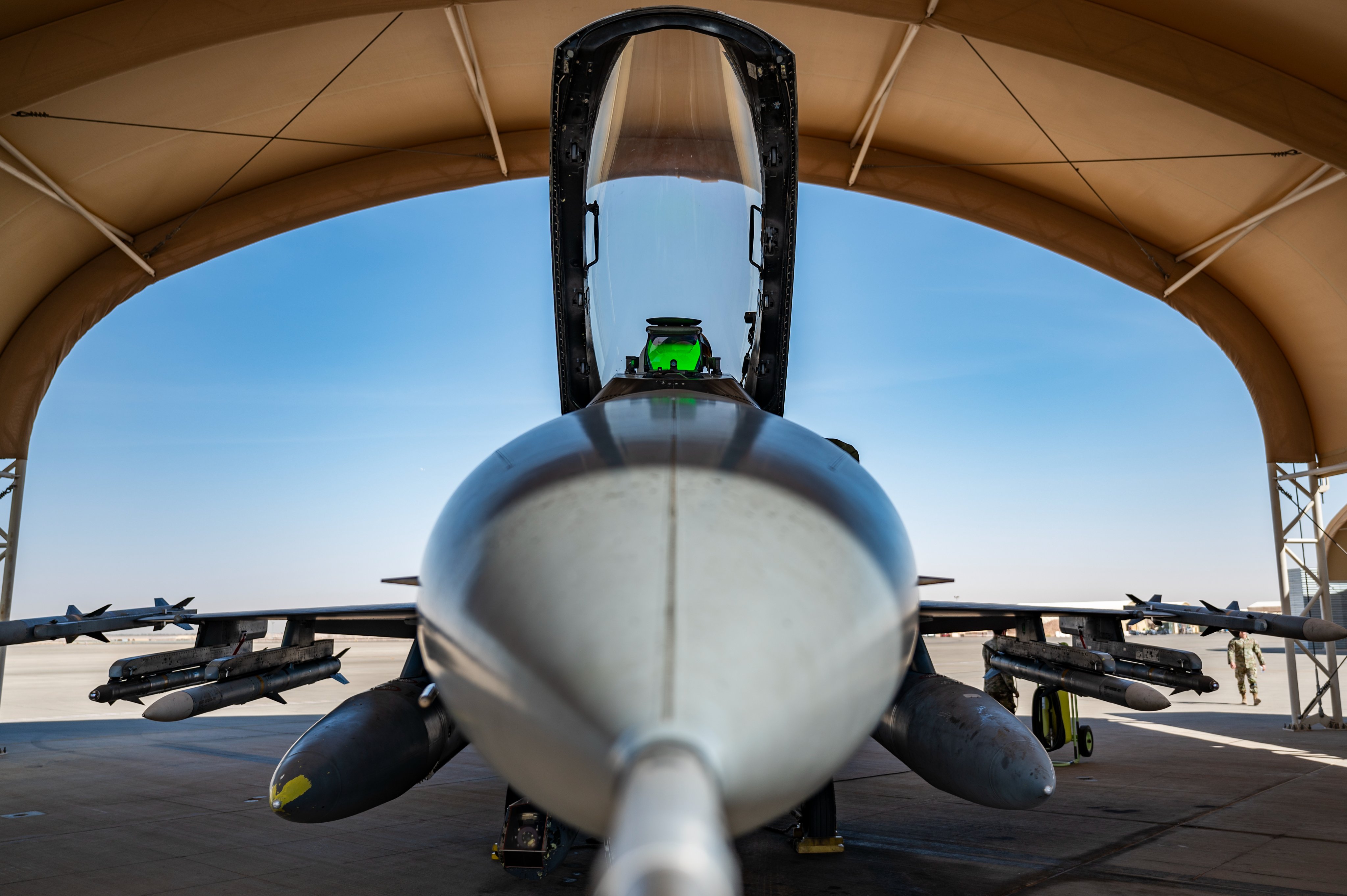In light of rising regional instability, the United States is dispatching substantial military reinforcements to the Middle East. This deployment consists of a carrier strike group, a fighter squadron, and extra warships. The escalation comes after the recent assassination of a high-ranking Hamas leader in Tehran, raising concerns about potential Iranian retaliation.
This deployment marks one of the largest increases in US military presence in the region since the early days of the Gaza war. At that time, the Pentagon had dispatched two carrier strike groups as a deterrent against regional militant groups.
The current buildup is driven by concerns that Iran, alongside its proxies Hezbollah in Lebanon and the Houthis in Yemen, might launch a substantial and multifaceted response.
Iran appears to be actively preparing for a possible conflict, with media sources indicating that major developments may be on the horizon. Iranian broadcasts have been featuring the Iran-Iraq war anthem, reflecting the heightened state of alert within the country.
Earlier this year, Iran demonstrated its capability to retaliate with an extensive missile and drone attack on Israel, which followed an Israeli strike on a consular building adjacent to the Iranian Embassy in Damascus.
AfriPrime App link: FREE to download...
https://www.amazon.com/Africircle-AfriPrime/dp/B0D2M3F2JT
The attack, which killed three senior Islamic Revolutionary Guard Corps (IRGC) commanders, saw Iran deploy over 300 drones and missiles.
The US and its allies played a crucial role in intercepting these threats, with US Air Force F-15E Strike Eagles from units in England and North Carolina being particularly effective in shooting down more than 70 Iranian drones.
Should a large-scale Iranian attack occur, the US Air Force is expected to play a significant defensive role once again. US Defense Secretary Lloyd J. Austin III has directed the deployment of an extra fighter squadron to the Middle East, boosting air defense capabilities.
The Pentagon has not disclosed the origin or specific location of the fighter squadron within the region. The Pentagon has various options for projecting combat airpower in the region, including deploying long-range bombers from the US.
In February, two B-1B Lancer bombers from Dyess Air Force Base conducted strikes on Iranian-backed militias and the Islamic Revolutionary Guard Corps or IRGC-related targets in Syria and Iraq in retaliation for a drone attack that killed three US soldiers in Jordan.
Some regional allies are willing to host US military forces but choose to keep these arrangements private. In the Middle East, US aircraft are stationed at several bases, including Prince Sultan Air Base in Saudi Arabia and Al-Dhafra Air Base in the UAE.
US aircraft are also stationed at Ali Al Salem Air Base and Ahmed Al Jaber Air Base in Kuwait, as well as at Al Udeid Air Base in Qatar, the largest US airbase in the Middle East. However, these countries have reportedly previously prohibited the US from using their airspace and air bases for attacks against Iran.
Additionally, F-16C/D fighter jets forward-deployed from Aviano Air Base in Italy have been actively participating in air defense missions in the area.
Further, the USS Theodore Roosevelt (CVN-71), which is equipped with F/A-18E/F Super Hornets and EA-18G Growlers, is also well-positioned to enhance defenses against aerial threats.
AfriPrime App link: FREE to download...
https://www.amazon.com/Africircle-AfriPrime/dp/B0D2M3F2JT
US To Strengthen Its Maritime Posture
In addition to enhancing aerial defense, the US is also revising its maritime strategy in response to regional tensions.
Secretary of Defense Lloyd J. Austin has ordered the USS Abraham Lincoln aircraft carrier strike group to the Middle East to replace the USS Theodore Roosevelt carrier strike group. The Roosevelt, currently stationed in the Gulf of Oman, is set to return home later this summer.
The move indicates that the Pentagon intends to maintain a consistent carrier presence in the region as a deterrent against Iran at least until next year.
Further, destroyers and cruisers equipped with ballistic missile defense capabilities will be deployed to both the Middle East and the Mediterranean Sea. However, specific details about which new ships will be sent to the Middle East are still unclear.
During Iran’s April missile attacks on Israel, the USS Arleigh Burke and the USS Carney successfully intercepted Iranian ballistic missiles using Standard Missile-3 (SM-3) interceptors, marking the first combat use of these weapons.
The US has maintained a steady naval presence in the region and the eastern Mediterranean, including two Navy destroyers, the USS Roosevelt and the USS Bulkeley, as well as the USS Wasp and the USS New York.

The Wasp and the New York, part of the amphibious ready group, carry a Marine expeditionary unit that could be deployed if necessary to evacuate US personnel.
Additionally, The Times Of Israel reported that two US Navy destroyers currently in the Middle East will be repositioned northward through the Red Sea to the Mediterranean Sea, with at least one potentially remaining in the Mediterranean if needed.
The Pentagon is also planning to enhance land-based ballistic missile defense in the region, though specific systems have not yet been identified. Potential additions could include the Patriot or Terminal High Altitude Area Defense (THAAD) systems, which use trailer-based mobile launchers to deploy interceptor missiles.
AfriPrime App link: FREE to download...



